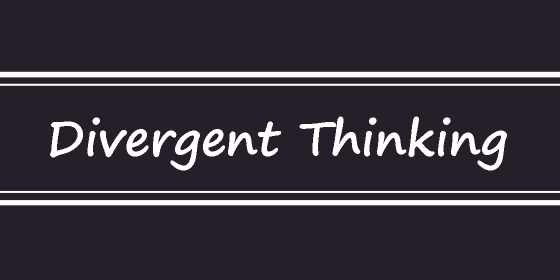Divergent Thinking

Divergent thinking is a cognitive process that involves generating a wide range of diverse and creative ideas or solutions in response to an open-ended problem or challenge. It is the opposite of convergent thinking, which is focused on finding a single, correct answer to a well-defined problem. Divergent thinking encourages the exploration of various possibilities, often leading to unconventional and innovative outcomes.
Key characteristics of divergent thinking include:
- Fluency: The ability to produce a large quantity of ideas or responses within a short period. In divergent thinking, quantity is emphasized over quality.
- Flexibility: Being able to shift thinking and explore multiple perspectives, approaches, or categories when generating ideas.
- Originality: Producing unique and novel ideas that are not typically associated with the problem or challenge at hand.
- Elaboration: Expanding on initial ideas and making connections between seemingly unrelated concepts.
- Unconventional Thinking: Embracing unconventional, imaginative, and even whimsical ideas without judgment or restraint.
Divergent thinking is a fundamental aspect of creativity and is critical in various fields, including problem-solving, brainstorming sessions, and innovation. It encourages individuals to break away from traditional patterns of thinking and explore new possibilities, often leading to groundbreaking solutions.
In contrast, convergent thinking is used to analyze and evaluate the generated ideas, focusing on selecting the most suitable and feasible solutions to pursue further. While divergent thinking generates a broad range of ideas, convergent thinking narrows down those ideas to the most promising ones for implementation.
Both divergent and convergent thinking play complementary roles in the creative process. Divergent thinking allows for the exploration of the unknown and the generation of diverse ideas, while convergent thinking provides the critical evaluation and refinement needed to transform those ideas into practical and effective solutions. By combining these thinking styles, individuals and teams can foster a rich and dynamic creative process that leads to innovative and valuable outcomes.